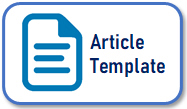Measuring The Efficiency of Pesantren Cooperatives: Evidence in Indonesia
DOI:
https://doi.org/10.14421/grieb.2018.062-03Keywords:
Efficiency, Cooperative, Pesantren, DEA.Abstract
The Cooperative (Koperasi) as a non-Bank financial institution has the purpose of improving the welfare of its members as Koperasi Hidmat and the staffs of Latifah Mubarokiyah Koperasi Ponses Suryalaya that have been since decades ago. Over time, the ideal cooperative can show a significant development and increase the welfare of its members. This study aims to determine the efficiency of cooperative as a benchmark, because by known the performance value of a cooperation, it will known the weeknesses and advantages so that it can be improved the weaknesses and maintain the advantages.The method used is apply Data Envelopment Analysis (DEA). Inputs used from principal savings, mandatory savings, and fixed assets while the output used from savings in the cooperative, savings in other cooperative and SHU. As for result of this research indicates there are 9 perfect efficient DMUs (100 %) and inefficient DMU is 11 DMUs, consisting of 7 (IRS conditions) and 4 (DRS condition). The most inefficient cooperative is Koperasi Hidmat (2014) of 30.66% efficiency level.Kopkar IAILM is able to maintain its grade efficiency level from 2009 to 2015 when compared to other DMUs cooperatives in the observation, except in 2014. The calculation of efficiency level in this research is relative and it is not absolute, so that it is possible when the cooperative sample is added or the observation year is expanded, so it will get different result. The necessity of any cooperative or BMT based on Pondok Pesantren to make annual financial statements in order to increase accountability and transparency of fund management.
Downloads
 Abstract viewed: 580 times
|
Abstract viewed: 580 times
|
 PDF downloaded = 530 times
PDF downloaded = 530 times
References
Ajid Tohir et al, Tarekat Qodiriyah Naqsabandiyah Pondok Pesantren Suryalaya Membangn Peradaban Dunia, Mudawamah Warohmah, Suryalaya Tasikmalaya, 2010.
Andersen, P., and Petersen, N.C. (1993), “A procedure for ranking efficient units in DEA”, Management Science, Vol.39, pp. 1261-1264.
Ascarya dan Yumanita, 2007, Analisis Efisiensi Perbankan Syariah di Indonesia dengan Data Envelopment Analysis, TAZKIA Islamic Finance and Business Review, Vol.1, No.2, Desember 2006.
Bank Indonesia (2007), Cetak Biru Pengembangan Perbankan Syariah Indonesia, www.perpustakaan.kemenkeu.go.id
Banker, R.D., Charnes, A., and Cooper, W.W. 1984. Some Models for Estimating Technical and Scale Inefficiency in Data Envelopment Analysis.Management Science, 30 (9): 1078-92.
Bessent, A.M., Bessent, E.W., Elam, J., and Clark, C.T. (1988), “Efficiency frontier determination by constrained facet analysis”, Operations Research, Vol. 36, pp. 785-796.
Burhanudin, Koperasi Syariah dan Pengaturannya di Indonesia, Bandung, 2016.
Caves et.al. 1982. The Economic Theory of Index Number and The Measurement of Input, Output and Productivity. Econometrica, 50 (6):1393-1414.
Charnes, A., Clarke, C., Cooper, W.W., and Golany, B. (1985), “A development study of DEA in measuring the effect of maintenance units in the US Air Force”, Annals Operation Research, Vol.2: 95-112
Charnes, A., Cooper, W.W., and Rhodes, E. 1978. Measuring the Efficiency of Decision Making Units.European Journal of Operation Research, 2 (6): 429-44.
Charnes, A., Cooper, W.W., Golany, B., Seiford, L.M., and Stutz, J. (1985), “Foundations of DEA and Pareto-Koopmans empirical production functions”, Journal of Econometrics, Vol. 30: 91-107.
Charnes, A., Cooper, W.W., Huang, Z.M., and Sun, D.B. (1990), “Polyhedral cone-ratio DEA models with an illustrative application to large commercial banks”, Journal of Econometrics, Vol. 46: 73-91.
Coelli, Timothy J, D.S. Prasada Rao, Christopher J. O’Donnell dan George E. Battese, 2005, An Intoduction to Efficiency and productivity Analysis, edisi kedua, Springer
Cook, W.D., Chai, D., Doyle, J., and Green, R.H. (1998), “Hierarchies and groups in DEA”, Journal of Productivity Analysis, Vol.10:177-198
Cook, W.D., Hababou, M., Tuenter, H. (2000), “Multi-component efficiency measurement and shared inputs in data envelopment analysis: An application to sales and service performance in bank branches”, Journal of Productivity Analysis, Vol. 14, pp. 209-224.
Cooper, W.W., Park, K.S., and Yu, G. (1999), “IDEA and AR-IDEA: Models for dealing with imprecise data in DEA”, Management Science, Vol. 45, pp. 597-607.
Deprins, D., Simar, L., and Tulkens, H. (1984), “Measuring labor-efficiency in post offices”, in Marchand, M., Pestieau, P., and Tulkens, H. (Eds). The performance of public enterprises – Concepts and measurement, Amsterdam, North-Holland, 243-267.
Djazuli, Yadi Janwari, Lembaga-Lembaga Perekonomian Umat, RajaGrafindo Persada, Jakarta, 2002
Effendi, Yuventus.(2016), “Measuring efficiency of the Indonesian Islamic Banks”, KajianEkonomiKeuangan, Vol. 20 No. 2.
Fare, R., and Grosskopf, S. (1996), Intertemporal Production Frontiers: With Dynamic DEA. Boston, MA: Kluwer Academic.
Firdaus, M.F., Muhammad N.Hosen. 2013. Efisiensi Bank Umum Syariah Menggunakan Pendekatan Two Stage Data Evelopment Analysis.BuletinEkonomiMoneterPerbankan Bank Indonesia Vol 16 (2) Tahun 2013. Jakarta
Fungsi Lembaga keuangan Syariah Dalam Pemberdayaan Ekonomi Umat, Balai Penelitian dan Pengembangan Agama Islam, Jakarta, 2008
Groebner, David F., Patrick W. Shannon, Phillip C. Fry dan Kent D. Smith (2008), Business Statistics: A Decision-Making Approach, 7th edition Prentice-Hall, Inc.
Hadad, Muliaman., Wimboh Santoso, Dhaniel ilyas, Eugenia mardanugraha (2003), Analisis Efisiensi Industri Perbankan Indonesia: Penggunaan Metode Nonparametrik Data Envelopment Analysis (DEA), Bank Indonesia.
Harun nasution et al, Thoriqot Qodiriyyah Naqsabandiyyah Sejarah, Asal Usul, dan Perkembangannya, Institut Agama Islam Latifah Mubarokiyah, Tasikmalaya, 1995.
Nasuha, Amalia (2012), “Dampak Kebijakan Spin-Off terhadap Kinerja Bank Syariah”, Al-Iqtishad Vol. IV No. 2
Pastor, J.T., Ruiz, J.L., and Sirvent, I. (1999), “An enhanced DEA Russel graph efficiency measure”, European Journal of Operational Research, Vol. 115, pp. 596-607
Peraturan Bank Indonesia (PBI) Nomor 11/10/PBI/2009 Tentang Unit Usaha Syariah.
Rusydiana, Aam Slamet (2018). “Indeks malmquist untuk pengukuran efisiensi dan produktivitas bank syariah di Indonesia”, Jurnal Ekonomi dan Pembangunan, Vol.26, No.1, pp.47-58.
Rusydiana, Aam Slamet and Sanrego, Y.D. (2018). “Measuring the performance of Islamic banking in Indonesia: An application of Maslahah-efficiency quadrant (MEQ)”, Journal of Islamic Monetary Economics and Finance, Vol.3, Special Issue, pp.103-130.
Rusydiana, Aam Slamet and Devi, A. (2013). “Challenges in Developing Baitul Maal wat Tamwiil (BMT) in Indonesia using Analytic Network Process (ANP)”. Business and Management Quarterly Review 4(2) 51-62.
Rusydiana, Aam Slamet dan Tim SMART Consulting.(2013). Mengukur Tingkat Efisiensidengan Data Envelopment Analysis. Bogor: SMART Publishing.
Sengupta, J.K. (1992), “A fuzzy systems approach in data envelopment analysis”, Computers & Mathematics with Applications, Vol. 24(9): 259-266.
Sexton, T.R., Silkman, R.H., Hogan, A.J. (1986), “Data envelopment analysis: Critique and extensions”. In: Silkman, R.H. (Ed), Measuring Efficiency: An assessment of Data Envelopment Analysis, Vol. 32, Jossey-Bass, San Francisco, pp. 73-105.
Simar, L, and Wilson, P.W. (1998), “Sensitivity analysis of efficiency scores: How to bootstrap in nonparametric frontier models”, Management Science, Vol. 44(1): 49-61
Siswadi, Erwinta., R. Nugroho Purwantoro (2005), Paradigma baru pengukuran efisiensi kinerja relatif berbasis pendekatan matematik, Manajemen Usahawan No. 06 TH XXXIV Juni 2005.
Statistik Perbankan Syariah Bulan Mei Tahun 2016
Sufian, Fadzlan. 2006. “The Efficiency of Islamic Banking Industry: A Non-Parametric Analysis with Non-Discretionary Input Variable”. Islamic Economic Studies Vol. 14, No. 1 dan 2..
Thompson, R.G., Singleton, Jr.F.D, Thrall, R.M., and Smith, B.A. (1986), “Comparative site evaluations for locating a high-energy physics lab in Texas”, Interfaces, Vol. 16, pp. 35-49.
Tone, K. (2001), “A slacks-based measure of efficiency in DEA”, European Journal of Operational Research Vol. 130:498-509.
Umam, Khoirul (2010), Peningkatan ketaatan syariah melalui pemisahan (spin-off) Unit Usaha Syariah Bank Umum Konvensional, Mimbar Hukum Vol. 22 No. 3, hal 607-624
Undang-undang No. 21 tahun 2008 tentang Perbankan Syariah
Wahab, Hosen dan Muhari. 2014. Komparasi Efisiensi Teknis Bank Umum Konvensional dan Bank Umum Syariah di Indonesia dengan Metode Data Envelopment Analysis. Jurnal Aliqtishod Vol 6 No 2. 2014
Widiyanto bi Mislan Cokrohadisumarto, BMT Praktek dan Kasus,Raja Grafindo Persada, Jakarta, 2016,
Zaidi Abdad, Lembaga Perekonomian Umat di Dunia Islam, Pt Angkasa, Bandung, 2003
Downloads
Published
Issue
Section
License
Global Review of Islamic Economics and Business is licensed under a
Creative Commons Attribution-ShareAlike 4.0 International License



















